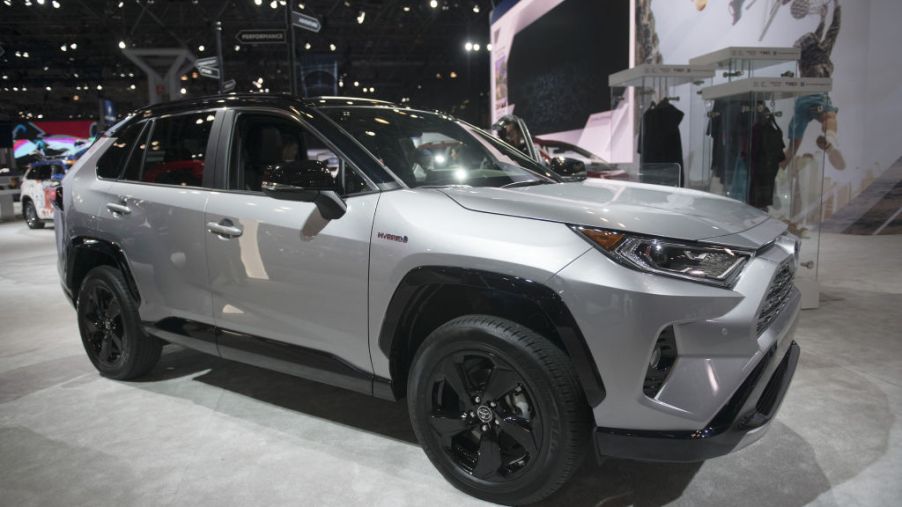
Toyota RAV4 Passes Heart-Stopping Foreign Safety Test
The Toyota RAV4 was recently named the most popular crossover SUV in the States. When you look at its wide selection of standard safety features, its impressive fuel economy stats, and its powerful engine, it’s no secret why it’s one of the most popular picks for SUV fans. The RAV4 is even available as a hybrid.
The RAV4 is also easy to drive and has excellent handling for an SUV, according to Kelley Blue Book. The car was shown to maintain its balance both on and off the track. However, can it handle the infamous moose test that so many cars have failed?
Standard U.S. safety tests
The moose test is only performed stateside in Alaska, so there’s a good chance that you’ve probably never heard of it. The IIHS uses six tests to determine how well a car will hold up during a crash.
Three of these tests (the moderate frontal overlap, passenger frontal overlap, and drivers-side frontal overlap) replicate a situation where the vehicle is hit with an obstacle from either the front, driver’s, passenger’s side door. They also conduct safety tests to see how well the roof holds under heavy stress (such as flying rocks). The NHTSA performs most of the same tests, but they also conduct a rollover simulation.
What is a moose test?
The moose test is most commonly used in Sweden, but it’s also popular in other European countries and Canada. Similar to the newest tests conducted by the IIHS for pedestrian safety, the moose test recreates three scenarios: a child unexpectedly crossing the road in front of the car, an adult crossing the road, or an animal (in this case, a moose).
Unlike the IIHS’s tests, which require the emergency automatic braking system to bring the car to a full stop, the vehicle is expected to swerve around the obstacle and back to the appropriate lane without losing control of the car. The cars are driven at 43 miles per hour.
The RAV4’s performance
The RAV4 previously failed the moose test last month when tested by Teknikens Varld, the Swedish auto magazine that popularized the test. The 2016 RAV4 experienced severe problems with the rear wheels during the test, causing the vehicle to lift itself off the ground. The 2019 model stayed planted to the road but still couldn’t avoid hitting the cones.
In a test conducted by Swedish newspaper Expressen, the RAV4 performed slightly better. At the required speed of 43 miles per hour, the tester experienced that the wheels started to lose their grip on the road, but the electronic stability control kicked in right on time. However, once the tester increased the speed to 47 miles per hour, the RAV4 couldn’t avoid hitting the safety cones.
Expressen cited a few reasons for why its RAV4 performed better than the one used by Teknikens Varld. Each test had the maximum seating capacity of five passengers inside. However, Teknikens also filled up the cargo capacity to bring the car to its highest payload.
The Teknikens driver also had his foot on the gas during the maneuver, while the Expressen reporter took his foot off the gas as soon as the obstacle appeared. The newspaper argued that its simulation was more realistic.
The RAV4’s U.S. safety results
With the exception of average results for its headlights, the 2019 RAV4 got good marks in every test conducted by the IIHS and was rated Superior in handling frontal crashes.
The NHTSA noted that the car performed excellently in side crash tests and gave it an overall rating of 5 stars. It also has a better predicted reliability rating than many of its competitors.



